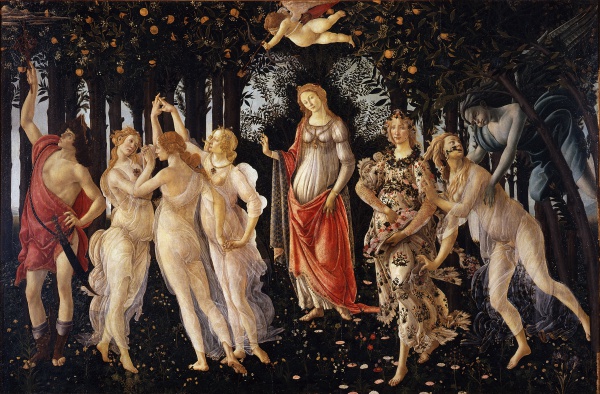Facts About Primavera
"Primavera" is a renowned painting by Italian Renaissance artist Sandro Botticelli, created in the late 1470s or early 1480s. This iconic work, often considered both controversial and beloved, depicts a group of mythological figures in a lush garden. While its exact meaning remains a subject of scholarly debate, most interpretations agree it serves as an allegory for the burgeoning growth of spring, influenced by Renaissance Neoplatonism.
In "Primavera" six female figures, two male figures, and a cupid are set against the backdrop of an orange grove. The arrangement of these figures suggests a fluid movement from right to left. The painting is rich in symbolism, drawing from classical and Renaissance literature, including works by Ovid and Poliziano. The meticulously detailed garden scene features a variety of plants and flowers, evoking the Flemish tapestries popular at the time.
Scholars have long debated the painting's meaning, offering interpretations ranging from a celebration of spring’s arrival to an embodiment of Neoplatonic ideals of love. The figures, such as Venus, Cupid, and the Three Graces, are believed to symbolize various aspects of love, fertility, and the changing seasons. Additionally, there are subtle references to the Medici family, who likely commissioned the work.
The origins of "Primavera" remain somewhat enigmatic, with various theories regarding its commission and intended purpose. It is closely linked to the Medici family and may have been created for a special occasion, such as a wedding. Over the years, the painting has been displayed in various locations, including the Uffizi Gallery in Florence. It was restored in 1978 to address issues of darkening and continues to be celebrated as a masterpiece of the Italian Renaissance.

 France
France